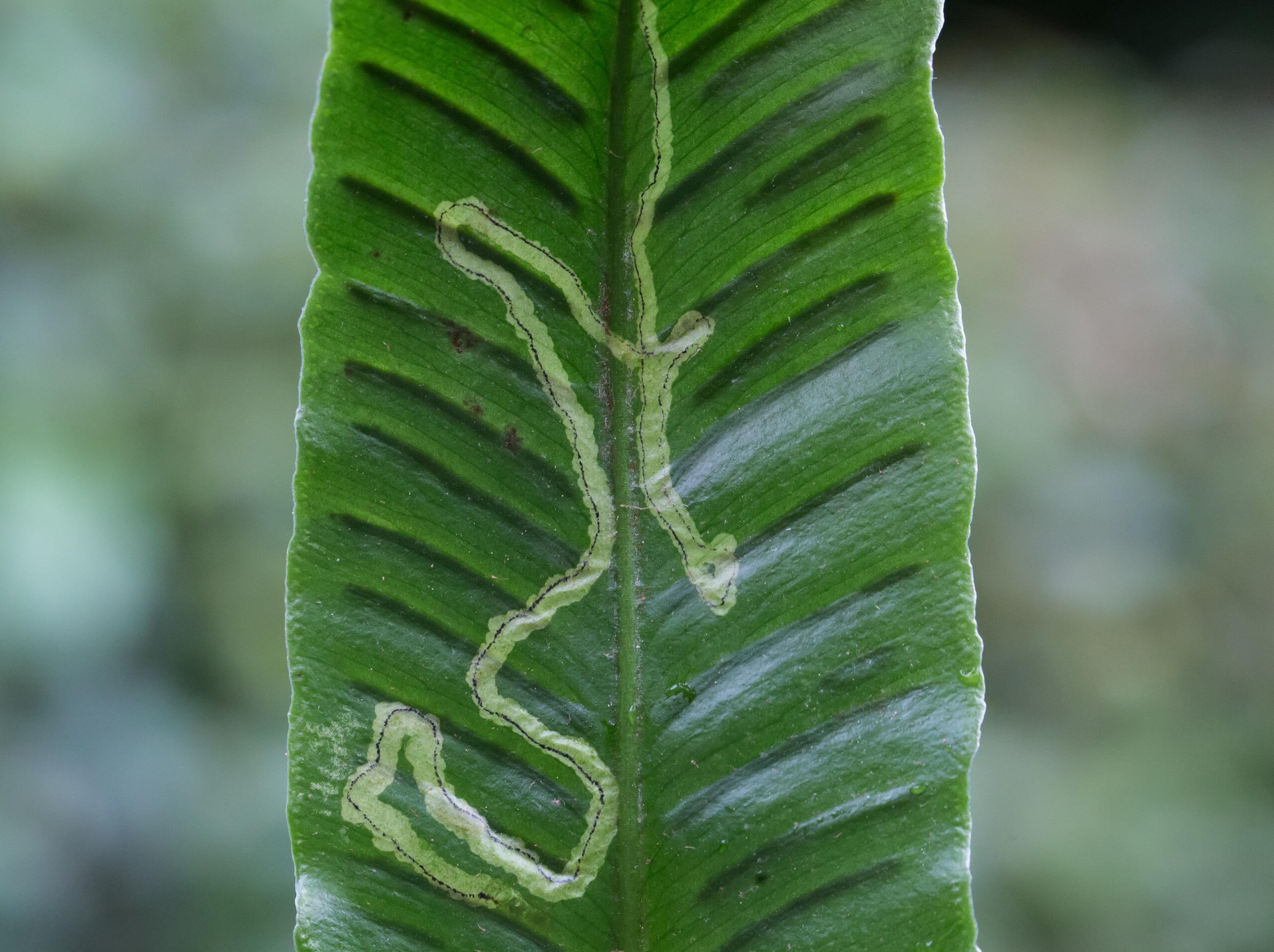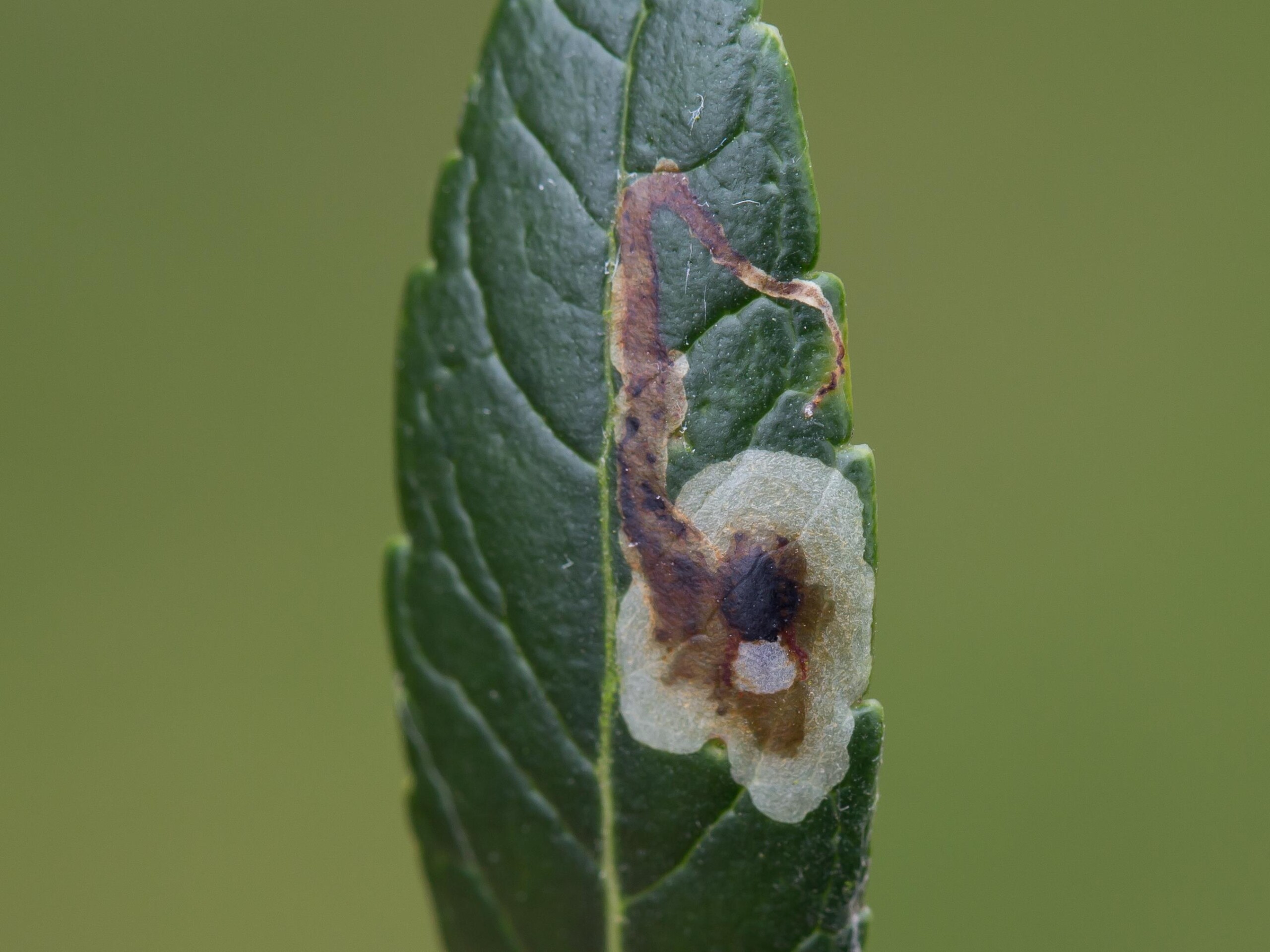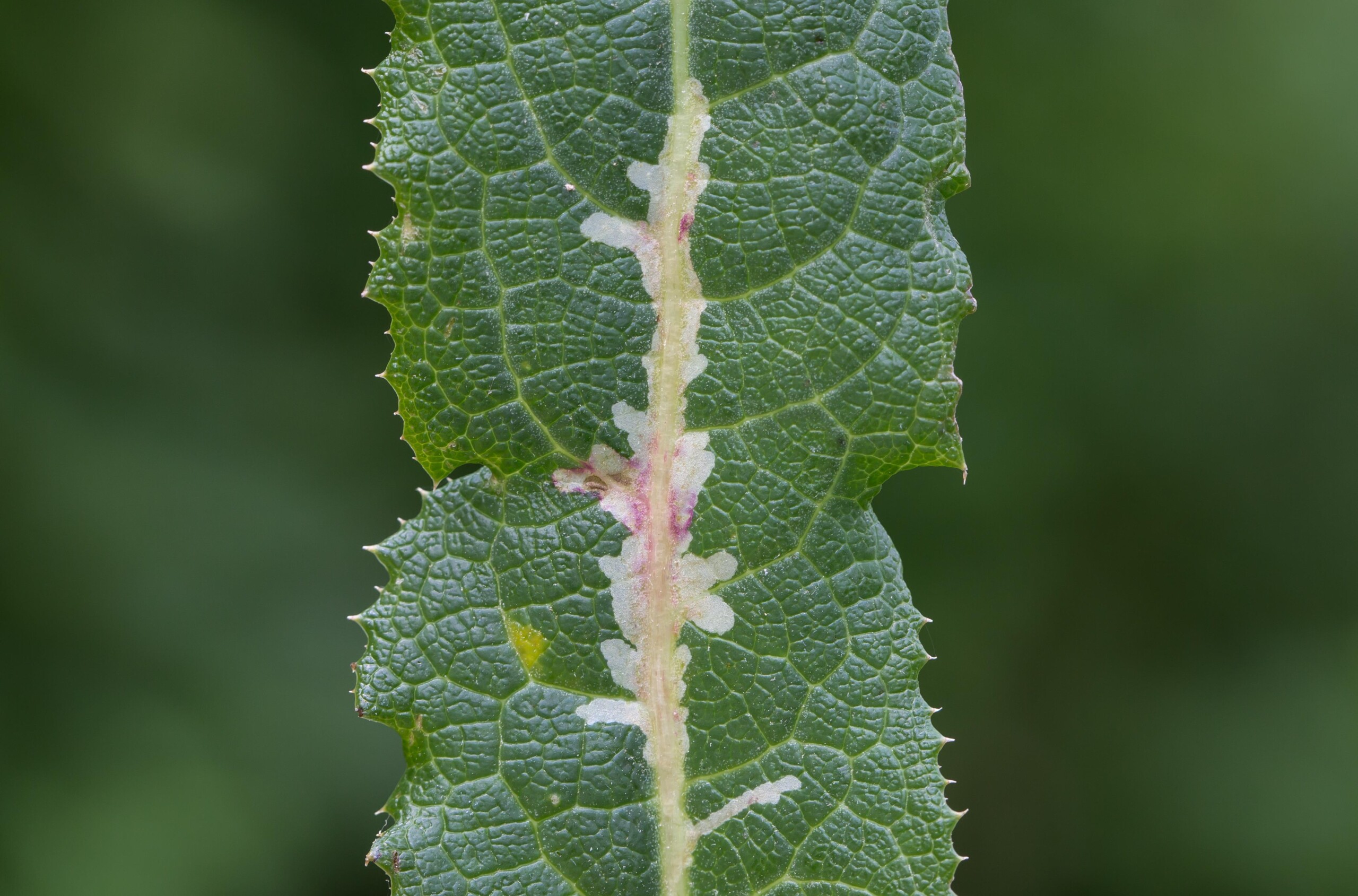Most species within the Agromyzidae are leaf miners, with the larval mines often taking very different forms. Some species form linear mines, some create blotches whilst others form mines which start linear but become blotch-like. There are some species which live within the midrib of the leaf and create short feeding corridors into the leaf blade. The majority of mines are formed on the upper surface of the leaf within the palisade parenchyma, whilst infrequently, mines can be more shallow, made immediately beneath the epidermis of the leaf or exclusively on the lower surface of the leaf in the spongy parenchyma.
The following image is an example of a linear mine caused by Chromatomyia scolopendri (Robineau-Desvoidy, 1851) on Hart’s-tongue fern (Asplenium scolopendrium);

Linear mine of Chromatomyia scolopendri (Robineau-Desvoidy, 1851) on Hart’s-tongue fern © Barry P. Warrington
Here, a blotch mine is created by Calycomyza artemisiae (Kaltenbach, 1856) on Mugwort (Artemisia vulgaris);

Blotch mine of Calycomyza artemisiae on Mugwort © Barry P. Warrington
The mine of Phytomyza phillyreae Hering in Buhr, 1930 starts linear but ends in a distinct blotch;

Phytomyza phillyreae Hering in Buhr, 1930 mine on Mock Privet, starting linear ending blotch-like © Barry P. Warrington
Finally, the mine of Ophiomyia cunctata (Hendel, 1920) which shows short corridors radiating from the midrib;

Ophiomyia cunctata (Hendel, 1920) mine on Sonchus sp. © Barry P. Warrington


